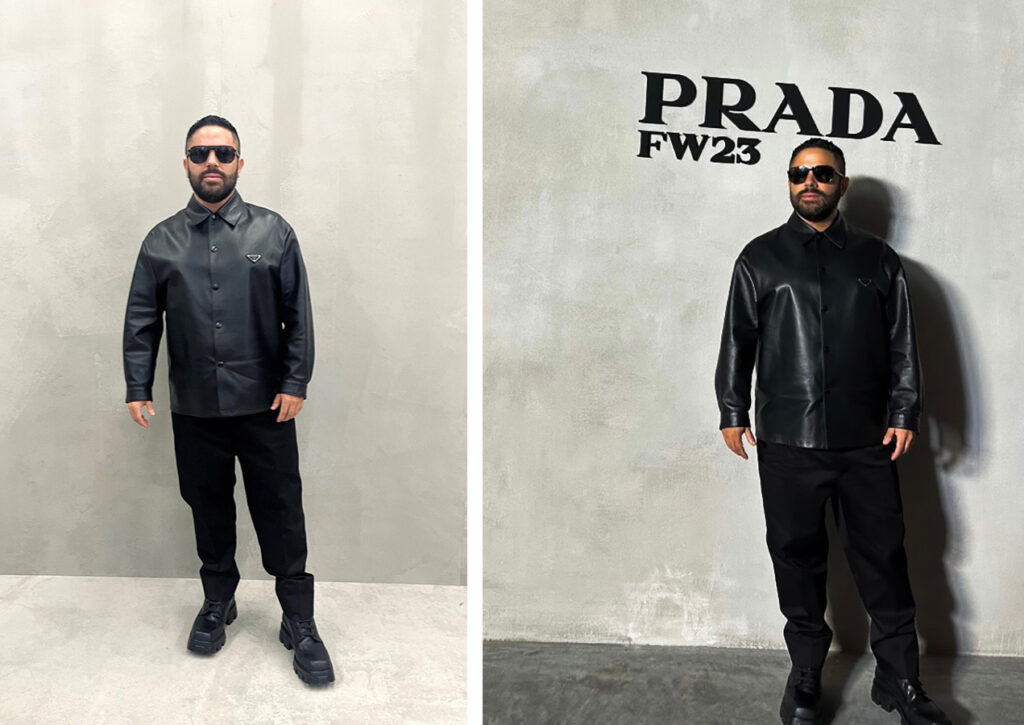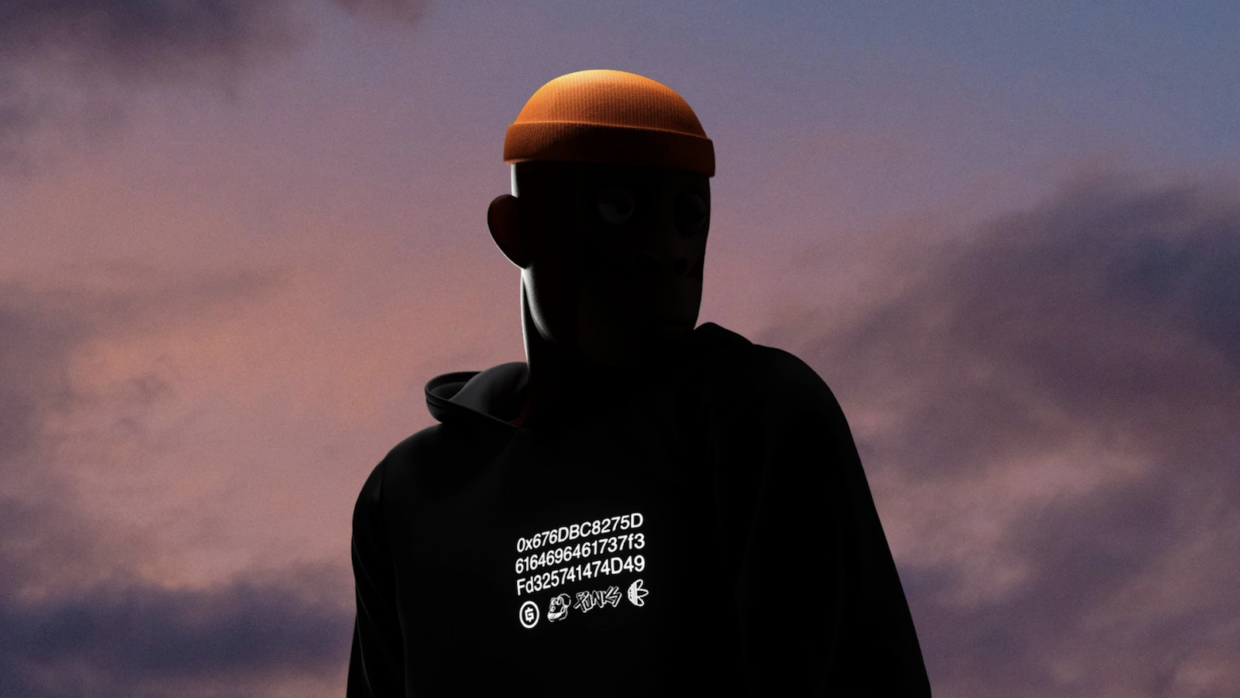NFT entrepreneur and collector and 9dcc founder Gmoney is set to launch a new collection of luxury baseball caps at NFT NYC on April 12th. Part of the 9dcc brand’s ITERATION-03 collection, the latest drop aims to distribute over 1,500 of these caps as part of a scavenger hunt called “9dcc Treasure Hunt.” Each cap integrates a special Networked Product™ technology, making it an interactive and personalized accessory for its wearers. Tapping on the monochromatic embroidered “9” on the back of the cap will allow users to interact with the 9dcc ecosystem, including sharing and collecting personalized Proof Of Attendance Protocol (POAPs).
Launched in August 2022 as a luxury Web3 brand, 9dcc has since released two collections, ITERATION-01 and ITERATION-02, designed in collaboration with the creator of the Chromie Squiggle, Snowfro. The first drop was only open to Gmoney NFT holders, and the second iteration dropped at Art Basel Miami. At Art Basel, holders were incentivised to scan each other’s NFC-chipped tees to collect POAPs.
JCC recently caught up with Gmoney to discuss the latest with 9dcc, the process of building a luxury brand, and the intricacies of phygital product production.
Why do you do the work that you do? Specifically with regards to 9dcc or any of your other ventures?
What motivates me at this point is helping the adoption of decentralized rails happen, and advancing the technology that I think is probably super vital for a more digitally immersive life to happen. A good example is increasing interoperability. When you take a look at the current Web2 dynamic, a lot of it is just closed ecosystems. I have my identity within Google, and I have my identity within Apple, but those aren’t necessarily composable. And I think one of the beautiful things about blockchain tech is that you can create these composable identity layers, these composable ways for, you know, different protocols to interact because they’re interoperable.
How do you see your newest venture, 9dcc, aligning with these motivations?
9dcc is a crypto-native luxury lifestyle brand aimed at helping people represent that they’re in crypto in the real world. Before 9dcc, you could buy a high-quality product that wouldn’t signal that you’re a crypto native, or you can get a crypto native product that wasn’t necessarily high-quality. How I think this leads into interoperability is [that] currently all of our products are linked to NFTs, which are certificates of authenticity that are on Ethereum.
Because of that, you can have this certificate of authenticity that lives on-chain, which is important in terms of sovereignty. You fully own that asset and nobody can really censor that asset because it’s yours. Also, each of our products distributes a POAP. If you’re ever to see a 9dcc out in the wild, you can collect an NFT for interacting with the product and person, which seeks to really develop this social layer.
If you collect my POAP and then you collect another four or five others, what are the implications for that going forward? Right? It’s probably much harder to disassociate with that wallet considering you have a human reputation tied to it. I think that that is one of the key missing links currently in crypto.

Image courtesy of 9dcc.
How are you onboarding people to work with you, either as artistic collaborators, or brand collaborators. Similarly, how are you onboarding users who want to access these products but maybe aren’t familiar with this landscape?
Onboarding creators and brands has been pretty easy. A lot of people have reached out to me and I’ve been able to talk to, I think, some of the best creatives in the world. I think [for] a lot of people, I’m becoming a voice that they can trust and somebody that they want to work with. Because of this, the opportunities of working with a lot of interesting people have been really awesome in terms of onboarding people.
I think that for a partnership and a luxury level, there are a couple of key points that many are interested in. One of them being provenance to verify that something is real quickly and easily without necessarily having to go to an expert that could still be fooled. The quality of fakes that are coming onto the market is starting to become so high.
I was at an event this past weekend, and I think I saw five or six 9dcc shirts at the event. So it seems like one of those things that happens slowly and as people start seeing the product out in the wild and interacting with it more and more, they start to understand more and more what’s going on. In that sense, I think it’s been really cool in terms of how young the brand is and how much our product is already showing up because of that community-building aspect and the gamification of the shirt.
There was somebody at our event in Paris who was wearing one of the rarer shirts. I think it sold for $5,000, one of the last ones of that type. That in itself is a bit of a flex because most people would have no idea, but the people who do know are all-in. The shirt wearer ran into Snowfro, the artist behind the shirt, and Snowfro was freaking out — “What if you stain it?!”
Anyway, as we get more and more products out, it’s gonna be really interesting to watch how those interactions change over time.

Gmoney attends Prada’s MFW showcase in February. Photo: Courtesy of Chapter 2
Can you speak more about the benefits and challenges of creating NFTs linked to physical shirts versus just producing one or the other?
From an operational perspective, it’s definitely much more complicated. For Iteration Two, each shirt that we made is a one-of-one, a one-of-X. We made 1,200 shirts, each totally unique, and we linked the NFT to that individual shirt. At that point, the margin for error is very small. You have to double, triple, quadruple check to make sure that you’re linking the right NFT to the right shirt. When you add different sizing, well, it becomes very complicated, very quickly.
We had a pop-up at Art Basel where you’d walk in, press a button, and mint an NFT in real time. This was done in collaboration with Snowfro, creator of the Chromie Squiggle, then we’d print the NFT directly to the garment. As soon as it was printed, we’d link the NFT to the chip within the shirt.
What’s been the most challenging aspect of building and growing both the community and the company?
I’d say the most challenging aspect right now is probably the perception of crypto outside of the crypto space. I’d say that there are two camps when I talk to people outside of the crypto space, there are people that understand the technology who say, “Okay, I understand the reason for it, we’re gonna keep on looking into it and investing time and being thoughtful with our approach.” And there are people that are like, “Oh, crypto, I don’t wanna hear anything about that.”
Two years ago, I think everybody was very interested in this space and taking a look at stuff. And now I think it’s a little more curated, which is fine. But for me, it’s then about doing the proof of concept and building out the community organically, which ultimately I think is better because you’re laying a stronger groundwork and a stronger framework for the foundation that you’ll ultimately gonna build up.
About Gmoney
Gmoney is an NFT cultural thought leader, educator, and community authority who has built an enormous following and reputation in the crypto economy space. With over 15 years of experience in traditional financial sectors, Gmoney is perhaps most well known for his iconic orange beanie-clad CryptoPunk ape, which masked his identity until fairly recently. A self-described futurist, thought leader in understanding blockchain technology, and crypto influencer, he’s partnered with Adidas and other major corporations (Nike, Pepsi, Visa) to advise their strategies for entering the Metaverse. Consequently, he’s been named to Fortune’s inaugural NFTy 50: “The 50 Most Influential People in NFTs“ as well as Vogue’s “Business 100 Innovators” list.



